[Updated on 1 January 2024] Have you decided to give squash a try after years of playing tennis? After all, both sports use rackets – so hard can it be? It’s easy to assume, but some squash rules confuse other racket sport players.
Granted, the basic principles of all racket sports are somewhat similar, but the individual rules differ.
Squash Rules that Differ from Other Racket Sports
To help clear up any confusion, we’ve listed 15 squash rules that are specific to the game of squash. You don’t want to lose a game because of technicalities that can be avoided.
To make it easier, we’ll use tennis as a comparison.
1. Scoring
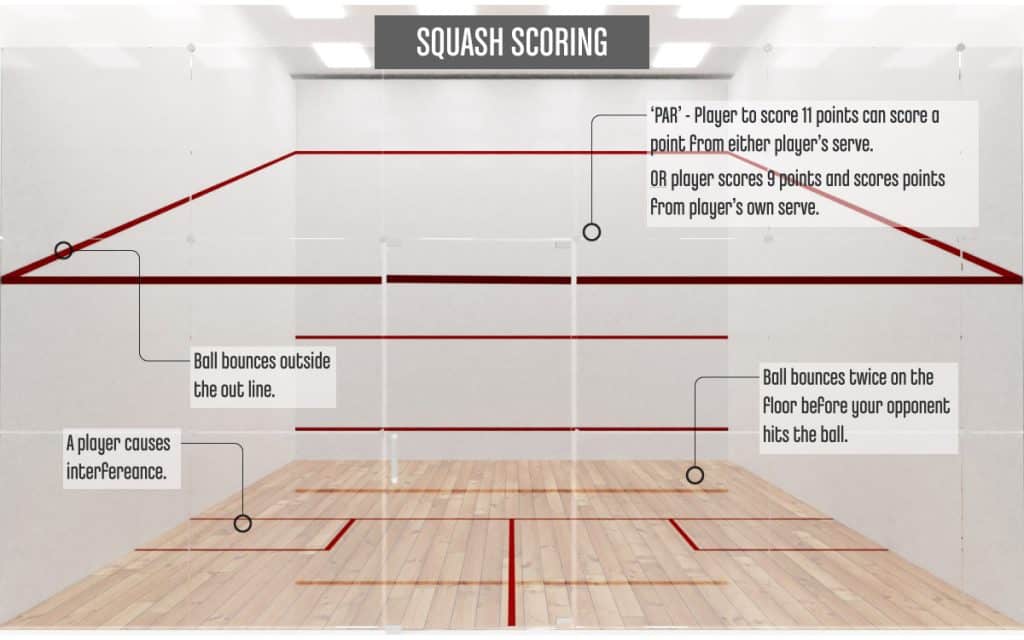 One of the biggest differences between squash and other racket sports such as tennis is associated with scoring. In tennis, you must play up to four points to win a game while you have to play up to eleven in squash. Tennis also requires you to win sets which leads to winning games to win the match.
One of the biggest differences between squash and other racket sports such as tennis is associated with scoring. In tennis, you must play up to four points to win a game while you have to play up to eleven in squash. Tennis also requires you to win sets which leads to winning games to win the match.
When playing squash, you just win games (11 points to win a game) to win the match.
Tennis also has a shot that is very rare in squash – an ace. In tennis, a serve can win you a game—if it’s in the form of an ace. With squash, a serve is only meant to start the game. It is very rare in squash for the serve to be an ace.
2. Playing Space
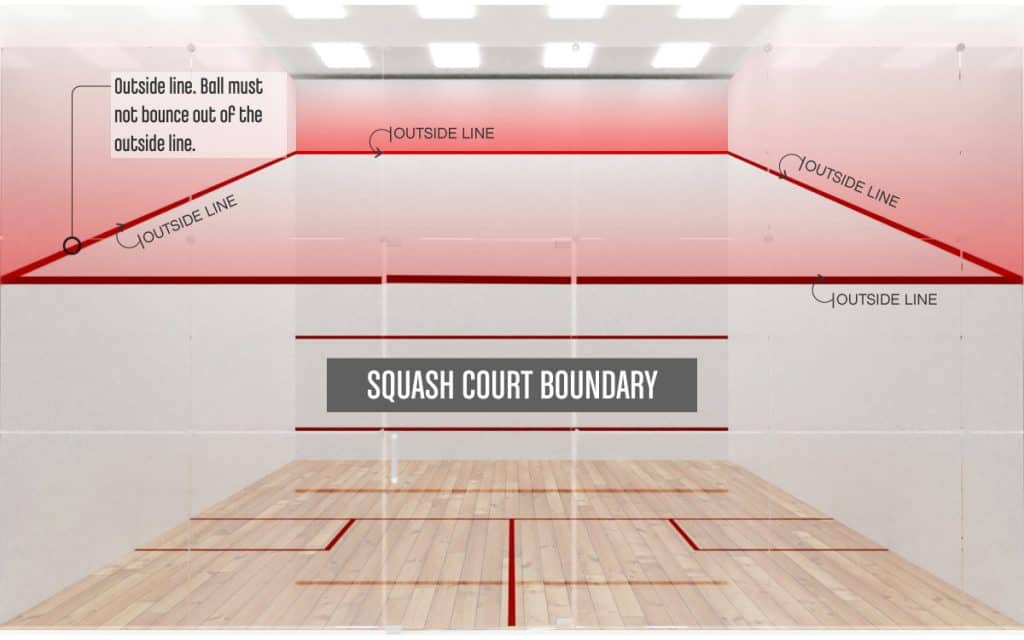 The space you’re allowed to play in differs from one racket sport to the next. In squash, you have a confined space in which to play. This is done to allow the opponent to reach the ball in time.
The space you’re allowed to play in differs from one racket sport to the next. In squash, you have a confined space in which to play. This is done to allow the opponent to reach the ball in time.
In other racket sports such as tennis, you have a larger space to play in.
3. Court Markings and Lines
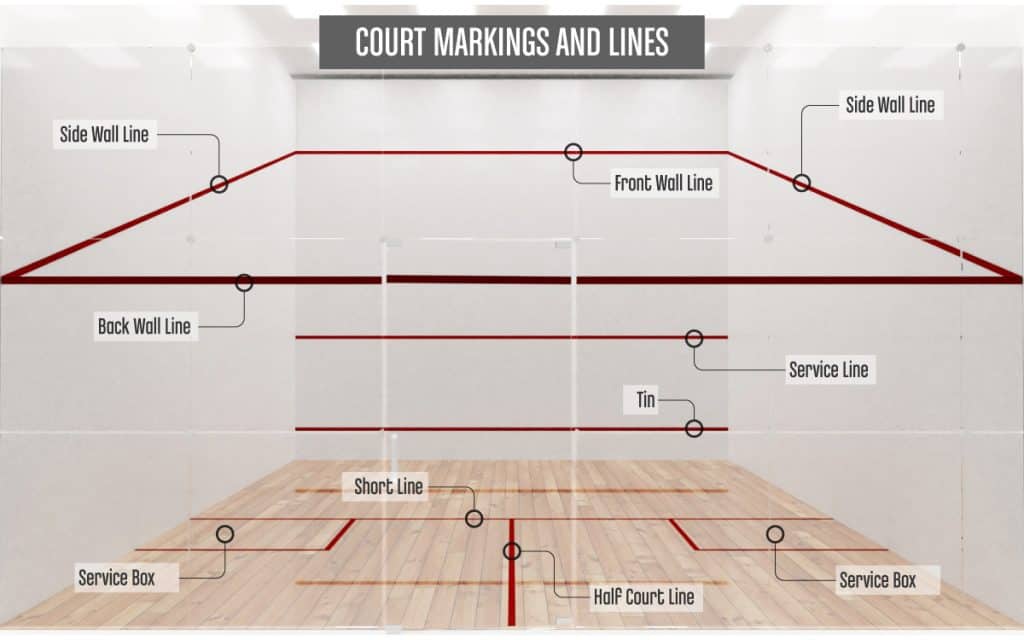 Court markings and lines differ with each racket sport and that’s something most newbie squash players have to understand—and fast. This can affect whether or not you score.
Court markings and lines differ with each racket sport and that’s something most newbie squash players have to understand—and fast. This can affect whether or not you score.
When playing tennis, if the ball hits the line, it’s considered to be “in.” On the other hand during squash, a ball that touches the line is “out.”
4. Double Fault
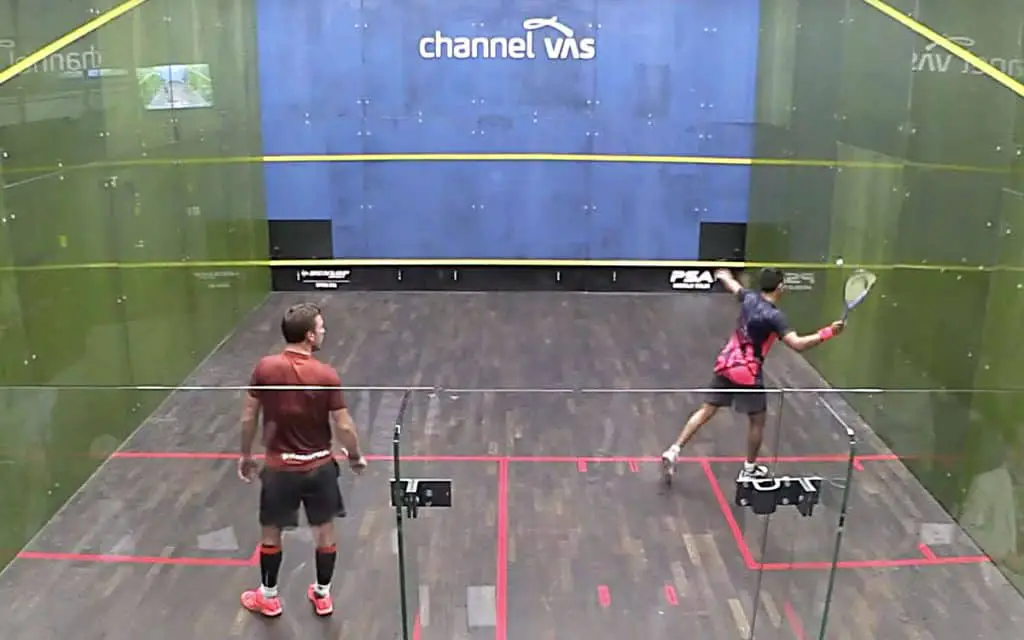 A double fault in the game of tennis will cost you a point. Here we’re referring to an incident where you fail to serve the ball to your opponent on two consecutive occasions.In squash, if you hit the ball out of bounds you lose the point and your opponent serves.
A double fault in the game of tennis will cost you a point. Here we’re referring to an incident where you fail to serve the ball to your opponent on two consecutive occasions.In squash, if you hit the ball out of bounds you lose the point and your opponent serves.
5. Serving Option
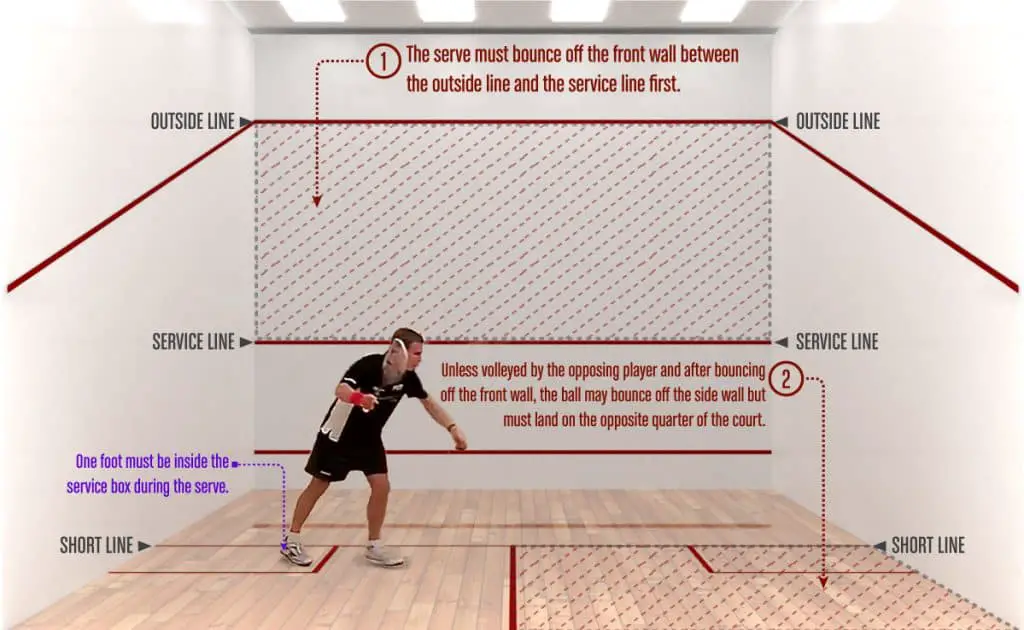 In squash, you’re free to decide which box you want to serve from. Is it the right or left? Your decision is usually influenced by your opponents strength. If they are right-handed, you often want to serve to their backhand as it is (generally) weaker. In this case you would start your serve on the right.
In squash, you’re free to decide which box you want to serve from. Is it the right or left? Your decision is usually influenced by your opponents strength. If they are right-handed, you often want to serve to their backhand as it is (generally) weaker. In this case you would start your serve on the right.
Unfortunately, you don’t have the luxury of picking the side you want to serve from in sports like tennis. In tennis, you always serve to your opponent’s deuce court to start.
6. Volleying Your Serve
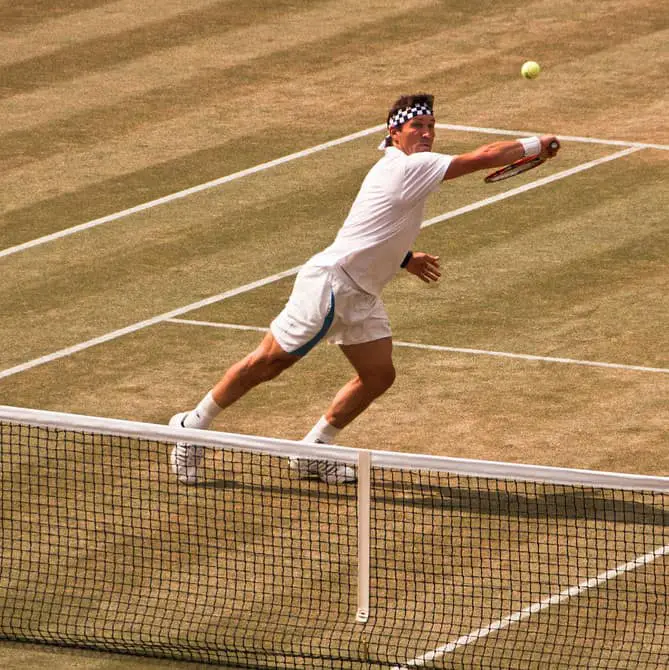 In other racket sports, you’re allowed to volley a serve. Professionals know all too well how this unsettles the server and puts them on the defensive.
In other racket sports, you’re allowed to volley a serve. Professionals know all too well how this unsettles the server and puts them on the defensive.
In squash, while it is within the rules, it is not recommended and often leads to the volleyer in poor court position.
7. Jump While Serving
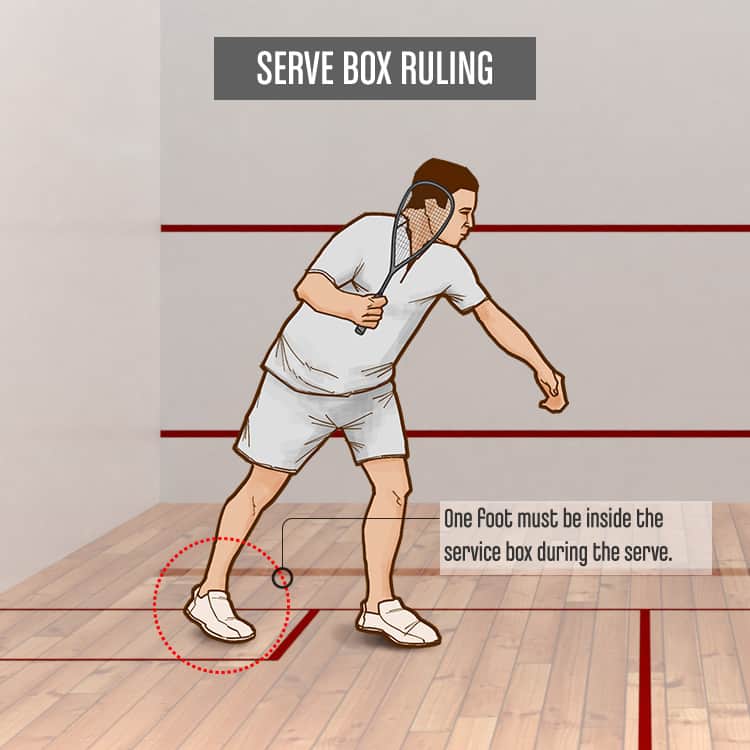 In tennis, you can jump while serving. In this case, both your legs are allowed to leave the ground during the serve. This is something most professionals enjoy—especially during the first attempt—because it increases the strength of the serve.
In tennis, you can jump while serving. In this case, both your legs are allowed to leave the ground during the serve. This is something most professionals enjoy—especially during the first attempt—because it increases the strength of the serve.
If you do that in squash, you’d have broken the rules. While serving in squash, at least one of your feet must remain in the service box before hitting the ball.
8. Double-Hitting the Ball
It’s possible for the ball to hit your racket twice as you take or return a shot. Unfortunately, that’s not allowed in the game of squash. But in other racket sports such as tennis, it’s not a big deal as long as you hit the ball in one continuous motion.
9. What Happens When You Hit Your Opponent With The Ball?
Accidents happen in any racket sport, and that can often include hitting your opponent with the ball. If this happens in squash, it may cost you a point. Depending on the situation, you’re either awarded the point or it goes to your opponent.
In tennis, the point goes to you but only if it hits your opponent first before hitting the ground.
10. Foot Fault Rules
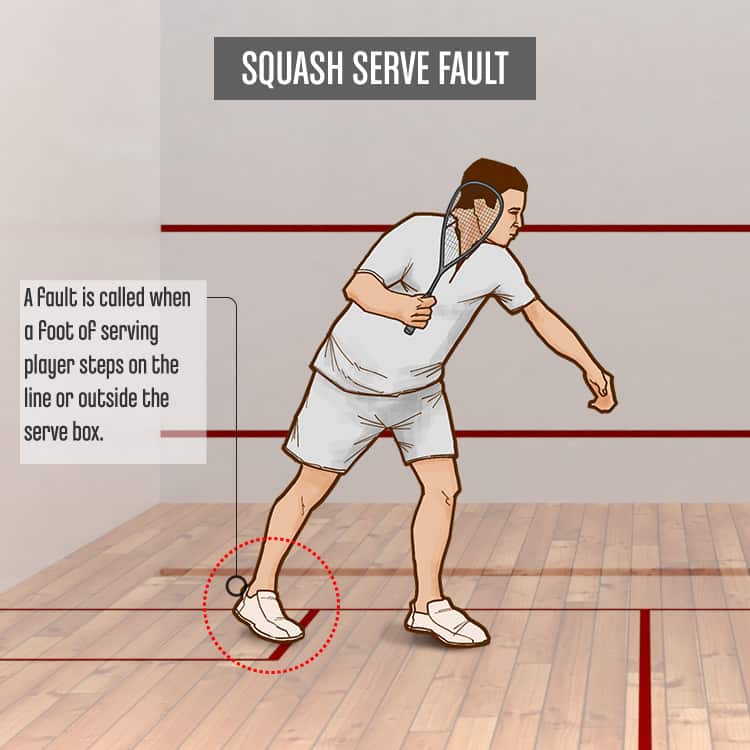 Foot placement during the serve in any racket sport is important. During the game of squash, it’s illegal for your foot to touch the squash service box as you serve. This is known as a foot fault.
Foot placement during the serve in any racket sport is important. During the game of squash, it’s illegal for your foot to touch the squash service box as you serve. This is known as a foot fault.
With regards to tennis, neither foot must touch the baseline or center mark while you serve as it’s also considered a foot fault.
11. Fair View
In squash, you’re supposed to give your opponent a fair chance to view the ball before they can strike it after it returns from the wall. This rule is highly subjective in squash and often causes arguments between opponents as receivers to claim that they weren’t given enough time to view the ball.
Given the fact that there’s no wall in tennis, fortunately, this rule doesn’t apply.
12. Further Attempt
In squash, it’s not permitted for a player to subsequently attempt to return a ball that’s still in motion, especially after several failed attempts. This is what is referred to as a “further attempt.”
This rule doesn’t apply to the game of tennis.
13. Broken Ball
Squash is advertently more intense than tennis and balls break. It’s not surprising given the fact that the ball is repeatedly smashed against a hard wall. If the ball breaks before a serve, the previous rally must be replayed.
Again, this rule doesn’t apply in tennis.
14. Time Limits Between Points and Games
During squash there aren’t any time limits between points; you have to play continuously. On the other hand, players are allowed 20 seconds between points.
When it comes to time limits between games, squash players are allowed 90 seconds. Tennis players, on the other hand, are allowed 120 seconds between each set.
15. Racket Size
In case you thought you could use the same racket for squash that you’ve been playing tennis with, that’s not the case. Generally, tennis rackets are larger and can be at least 75cm in length. In squash, your racket mustn’t be more than 68cm.
Conclusion
It’s clear that while squash has similarities with other racket sports, the sets of rules differ. We hope that our outline of the common squash rules that are confusing will steer you clear of any mistakes on the court. Familiarize yourself with the rules and enjoy the game.

Leave a Reply